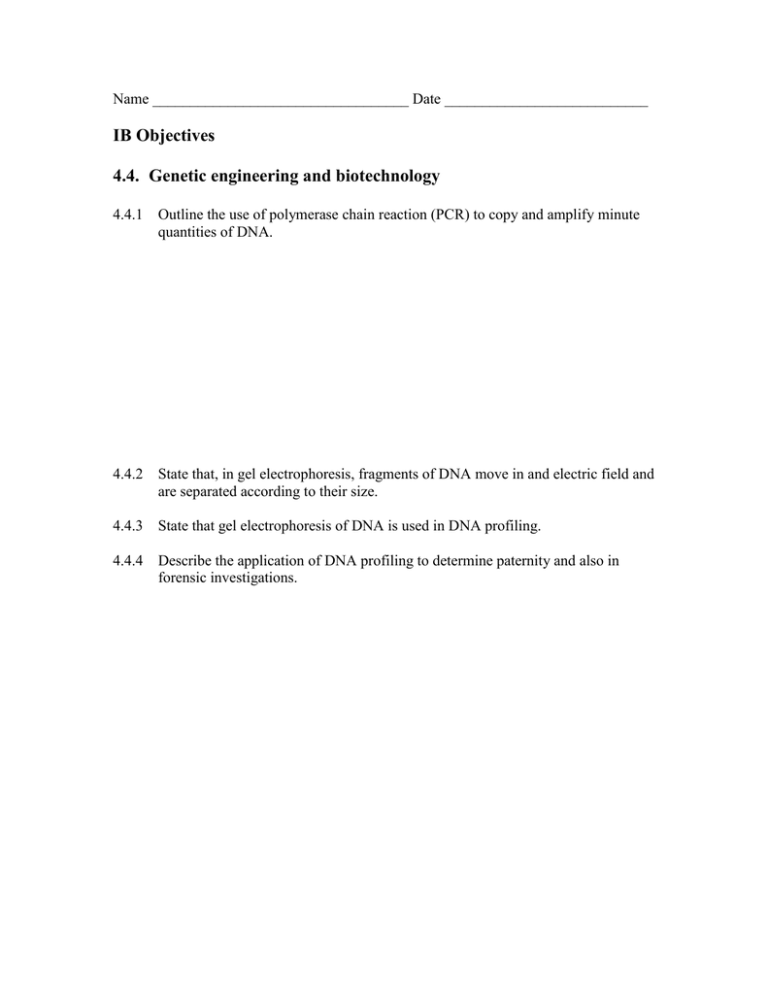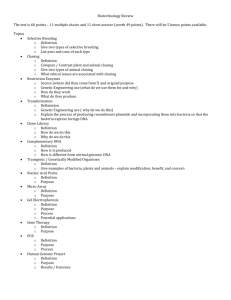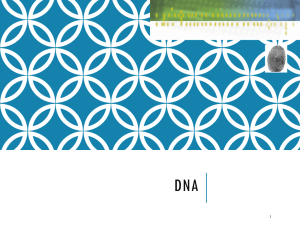IB Objectives 4.4. Genetic engineering and biotechnology
advertisement

Name __________________________________ Date ___________________________ IB Objectives 4.4. Genetic engineering and biotechnology 4.4.1 Outline the use of polymerase chain reaction (PCR) to copy and amplify minute quantities of DNA. 4.4.2 State that, in gel electrophoresis, fragments of DNA move in and electric field and are separated according to their size. 4.4.3 State that gel electrophoresis of DNA is used in DNA profiling. 4.4.4 Describe the application of DNA profiling to determine paternity and also in forensic investigations. 4.4.5 Analyze DNA profiles to draw conclusions about paternity or forensic investigations. (Provide a diagram and explain how to analyze it). 4.4.6 Outline three outcomes of the sequencing of the complete human genome. 4.4.7 State that, when genes are transferred between species, the amino acid sequences of polypeptides translated from them is unchanged because the genetic code is universal. 4.4.8 Outline a basic technique for gene transfer involving plasmids, a host cell (bacterium, yeast or other cell), restriction enzymes (endonucleases) and DNA ligase. 4.4.9 State two examples of the current uses of genetically modified crops or animals. 4.4.10 Discuss the potential benefits and possible harmful effects of one example of genetic modification. 4.4.11 Define clone. 4.4.12 Outline a technique for cloning using differentiated animal cells. 4.4.13 Discuss the ethical issues of therapeutic cloning in humans. (Therapeutic cloning is the creation of an embryo to supply embryonic stem cells for medical use).






